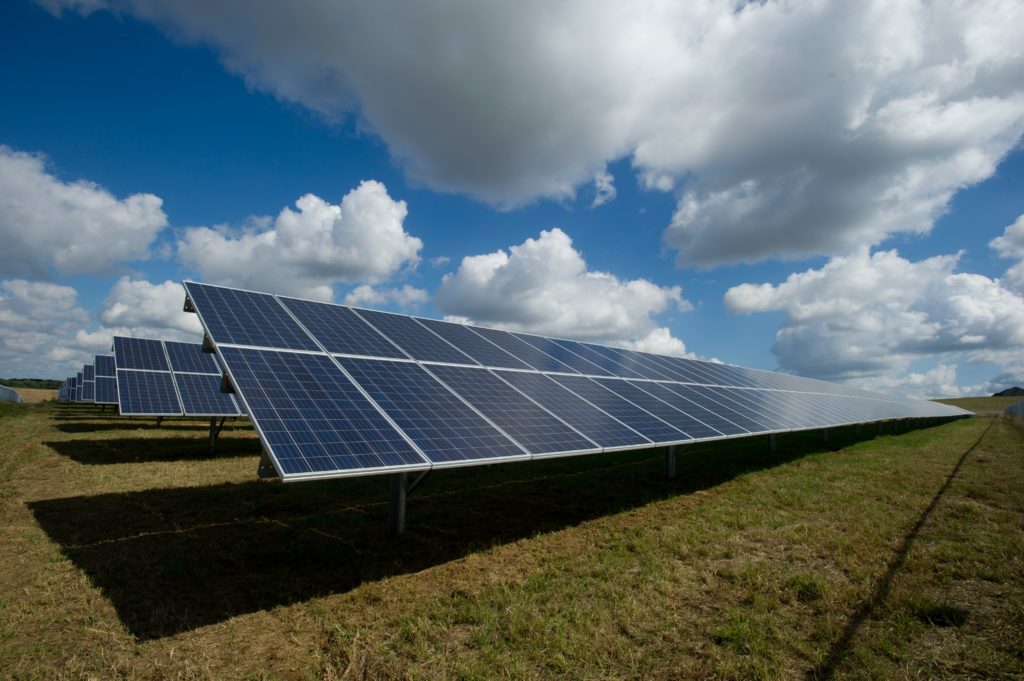While not a new subject, solar leasing is a topic that will garner increased attention because of the additional funds from the Inflation Reduction Act (IRA) becoming available at the beginning of 2023. The IRA incentivizes the adoption of solar through several mechanisms such as the 30% solar tax credit for installing solar on a residence, but the primary one affecting solar leasing on a commercial scale is the 30% business investment tax credit. This credit is expected to spur demand for more commercial solar projects over the next decade and landowners can expect to be approached by representatives of these future projects for leasing opportunities.
What is a solar lease?
The typical commercial solar lease is where an outside party approaches a landowner to negotiate placing solar panels, substations, power lines, roads and other necessary infrastructure on their property for a significant period of time (twenty-five to thirty-five years with optional extensions are common) for a specified rental rate per acre per year or with some form of revenue sharing much like a royalty payment for an oil or gas lease.
These leases tend to be complicated and due to the length of the lease it is important to have an experienced attorney look over any potential contract before signing. While the leases tend to be long, twenty to forty pages is not uncommon, there are some clauses that need to be reviewed carefully.
Typical Clauses and Things to be Aware of in Solar Leases
Different companies use different lease agreements; however, there are similarities between the various contracts. Understanding these clauses can help when consulting with an experienced attorney about potential lease options.
Signing a lease agreement does not guarantee a solar lease.
Signing a solar lease guarantees that the solar developer has the option to go forward with the construction of a solar project, but it does not guarantee that they will build it. Solar companies may approach many landowners and sign lease agreements that lock the landowner into an initial agreement where the solar company can gather data and decide which site will best fit their needs. During the initial period the landowner typically has to grant them access to the property and refrain from signing any other agreements that might interfere with the solar lease. If by the end of the initial period the company has not started construction then the agreement typically expires, the landowner is able to keep any payments that have already been made, and the landowner can sign new lease agreements with other solar companies.
Income from the Solar Lease
What have your neighbors been offered? Many leases have a confidentiality clause, but those are typically only binding after the contract has been signed. Rental rates can vary dramatically so researching current rates is critical before signing a solar lease. Another issue this often not thought of is how will your rental rate increase over time? Remember that these agreements can last for more than three decades. The revenue you receive might be adequate in 2023, but will that same sum be a fair rental rate in 2037? Escalation clauses address this issue by building into the agreement an orderly increase in the rental rate over the life of the lease agreement.
Property taxes
Property that is assessed and tax as agricultural property generally has a lower property tax rate than residential or commercial property. If a solar project is developed on your property then a county assessor may determine that the property is in commercial energy production rather than agricultural production which could significantly increase your annual property tax. This should be an area that is addressed in a lease agreement. Does the solar company pay the increase in taxes due to the solar development or will the landowner bear this cost?
Liability for Damage to the Solar Equipment
What about protecting the solar panels and other equipment on the leased property? Some leases make the landowner liable for any damages to equipment on the leased property. Can you guarantee that nobody will damage the equipment? Many solar projects construct fencing around the perimeter and it may be prudent to make the company responsible for any damage that occurs on their leased property.
Decommissioning the Project
Solar projects can easily last twenty-five to thirty-five years; however, at some point the project will no longer be economically viable. Who will pay for cleanup at the end of the lease period? Many contracts are silent as to which party bears the cost of removing the solar equipment and restoring the land to its prior condition. A good lease agreement should specify which party will be responsible for decommissioning the project and some ever require the solar company to establish a bond to pay for cleanup at termination. A lawyer can be extremely helpful in negotiating these types of arrangements.
Conclusion
There are numerous things that a landowner should think about before signing a solar lease and this article covers some of the important things to consider. Having an experienced attorney go through the lease is crucial because the time to negotiate is before signing the contract. For more information on the subject of solar leases click here.
To read the Inflation Reduction Act of 2022, click here.
To read Understanding Solar Energy Agreements by Shannon Ferrell, click here.
To read about Land Use Conflicts between Wind and Solar Renewable Energy and Agricultural Uses, click here.
